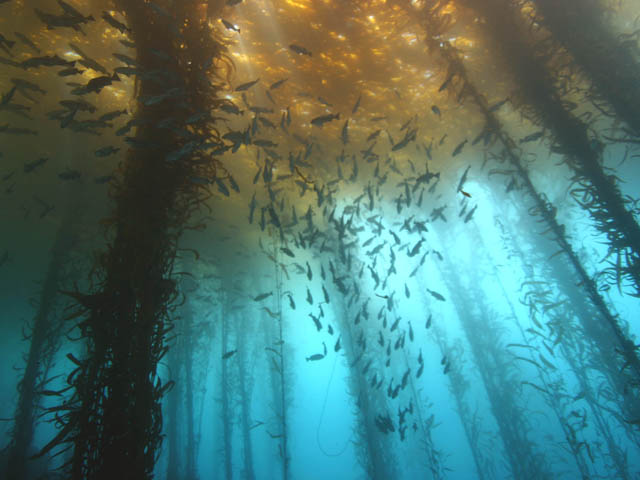So in April the UNESCO World Heritage folks updated the tentative site list for the United States. This is a big deal, because the last update was in 2008, so it's been nearly a decade.
Anyway, here are the new potential sites. The ones I've seen are in Bold:
Big Bend National Park, Texas

Brooklyn Bridge, New York

California Current Conservation Complex, California ("a contiguous conservation zone from Point Arena in the north to Point Piedras Blancas")

Central Park, New York

Early Chicago Skyscrapers, Illinois

Ellis Island, New York/New Jersey

Marianas Trench Marine National Monument, Northern Marianas Islands

Marine Protected Areas of American Samoa, American Samoa ("includes the National Marine Sanctuary of American Samoa, Rose Atoll Marine National Monument and Rose Atoll National Wildlife Refuge")

Moravian Church Settlements, Pennsylvania

Pacific Remote Islands Marine National Monument, Pacific Remote Islands (Baker, Howland, Jarvis, Wake, Johnston, Palmyra, Kingman)

Thoughts:
1) That's a lot of water. I'm rather surprised four of the ten are marine sanctuaries.
2) Ellis Island shouldn't be its own site - it should be combined with the existing Statue of Liberty designation.
3) Big Bend is cool. It's a very nice park. It's reason for inclusion apparently is 130 million years of fossils, which is crazy, but not like, Grand Canyon crazy.
4) On that same front - half natural and half cultural... I have complained we don't have enough cultural sites. This doesn't do all that much to fix that deficit. Especially if three are in New York City and its environs.
5) Not long ago (in fact just a few days before the new list was updated) I put forward what I thought would be good cultural additions. One was the architectural heritage of New York, and this included Central Park and the Brooklyn Bridge, along with a bunch of New York's most famous buildings. All nine of Chicago's early skyscrapers on the tentative list are kind of... blegh. I get why they went with Chicago, but it really took off in New York, you know? When people think "skyscraper" they think of the Empire State Building, not the Second Leiter Building.
6) Bethlehem Pennsylvania? A 1740s colonial era Moravian settlement? I think the Russian settlements in Alaska would be more nifty, if you're going to nominate that sort of thing, but whatever.
7) However: at least the three New York City sites and Chicago's skyscrapers are all post-1776. We currently only have one confirmed site made after America's founding - the Statue of Liberty. And while the Chicago buildings get close, most all being built in the 1890s (one was completed in 1899), nothing was nominated from the 20th century in this batch, which is disheartening.
Anyway, here are the new potential sites. The ones I've seen are in Bold:
Big Bend National Park, Texas

Brooklyn Bridge, New York

California Current Conservation Complex, California ("a contiguous conservation zone from Point Arena in the north to Point Piedras Blancas")

Central Park, New York

Early Chicago Skyscrapers, Illinois

Ellis Island, New York/New Jersey

Marianas Trench Marine National Monument, Northern Marianas Islands

Marine Protected Areas of American Samoa, American Samoa ("includes the National Marine Sanctuary of American Samoa, Rose Atoll Marine National Monument and Rose Atoll National Wildlife Refuge")

Moravian Church Settlements, Pennsylvania

Pacific Remote Islands Marine National Monument, Pacific Remote Islands (Baker, Howland, Jarvis, Wake, Johnston, Palmyra, Kingman)

Thoughts:
1) That's a lot of water. I'm rather surprised four of the ten are marine sanctuaries.
2) Ellis Island shouldn't be its own site - it should be combined with the existing Statue of Liberty designation.
3) Big Bend is cool. It's a very nice park. It's reason for inclusion apparently is 130 million years of fossils, which is crazy, but not like, Grand Canyon crazy.
4) On that same front - half natural and half cultural... I have complained we don't have enough cultural sites. This doesn't do all that much to fix that deficit. Especially if three are in New York City and its environs.
5) Not long ago (in fact just a few days before the new list was updated) I put forward what I thought would be good cultural additions. One was the architectural heritage of New York, and this included Central Park and the Brooklyn Bridge, along with a bunch of New York's most famous buildings. All nine of Chicago's early skyscrapers on the tentative list are kind of... blegh. I get why they went with Chicago, but it really took off in New York, you know? When people think "skyscraper" they think of the Empire State Building, not the Second Leiter Building.
6) Bethlehem Pennsylvania? A 1740s colonial era Moravian settlement? I think the Russian settlements in Alaska would be more nifty, if you're going to nominate that sort of thing, but whatever.
7) However: at least the three New York City sites and Chicago's skyscrapers are all post-1776. We currently only have one confirmed site made after America's founding - the Statue of Liberty. And while the Chicago buildings get close, most all being built in the 1890s (one was completed in 1899), nothing was nominated from the 20th century in this batch, which is disheartening.
